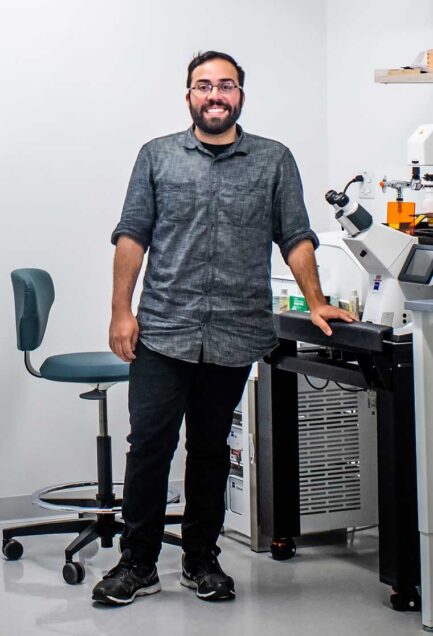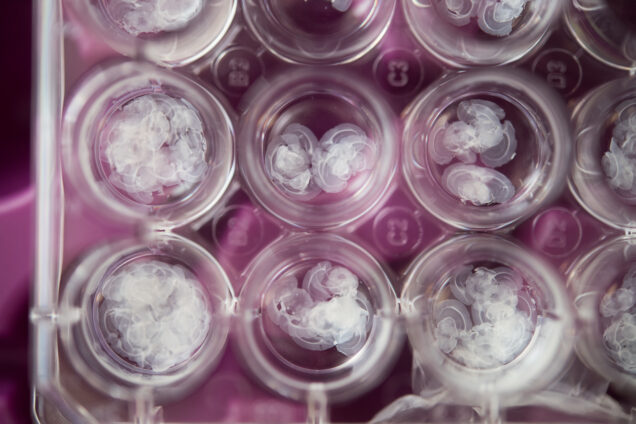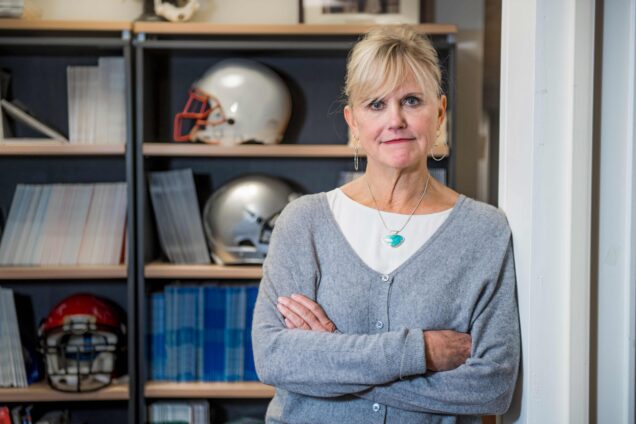Brains on Brains
GROWING OUR GRAY MATTER

As goes the mind, so goes everything else.
Neuroscientists at Boston University have been producing research that is leading to real-world applications and diagnostics in areas such as Alzheimer’s, stroke recovery, and concussion.
BRING BACK MEMORIES.
OR NOT.
To tackle mental health disorders like depression and posttraumatic stress disorder, neuroscientist STEVE RAMIREZ (CAS’10) has been exploring the malleable nature of memory. “Our million-dollar idea is, what if a solution for some of these mental disorders already exists in the brain?” Ramirez asks. In their September 2022 paper in Nature Communications Biology, Ramirez, lead author MONIKA SHPOKAYTE (CAMED’22), and a team of BU neuroscientists identify key molecular and genetic differences between positive and negative memories. In a separate paper published the same month in Nature Communications, Ramirez, former postdoc and lead author STEPHANIE GRELLA, and other colleagues on Ramirez’s team explore the possibility of diminishing the influence of negative memories by stimulating happier ones.
Our million-dollar idea is, what if a solution for some of these mental disorders already exists in the brain?
— Steve Ramirez, Assistant Professor of Psychological & Brain Sciences

CURRENT THINKING
Other BU scientists have wondered about more long-standing approaches to improving mind matters.
ROBERT REINHART, director of the COGNITIVE & CLINICAL NEUROSCIENCE LABORATORY, took a deep dive into the noninvasive application of electrical currents to stimulate brain function—considered a controversial practice in some medical circles. Reinhart and his team compared more than 100 studies of the technique, which introduces a mild oscillating current to the human brain via electrodes attached to the scalp. Their analysis, published in May 2023 in Science Translational Medicine, concluded that such treatment can improve—at least, in the short term—attention, memory, learning, and the ability to solve problems. The team’s findings carry direct and immediate translational benefits.

CURING THE INCURABLE
BU’s CHRONIC TRAUMATIC ENCEPHALOPATHY (CTE) CENTER, led by neurologist and William Fairfield Warren Distinguished Professor ANN MCKEE, has significantly expanded our understanding of the incurable brain disease, publishing more than 180 studies on its causes and effects. And the increasing supply of donated brains—to date, more than 1,300—at Boston University’s UNITE BRAIN BANK offers a critical resource to researchers at BU and elsewhere.
Linked to repetitive blows to the head, CTE can only be diagnosed postmortem and is associated with everything from memory loss to impulsive behavior to suicidal thoughts and depression. BU researchers recently found that those who start playing tackle football at an early age or play it for more than 11 years are at greater risk for CTE. Their research was published in March 2023 in Brain Communications.

And in the largest study to date on CTE’s causes, researchers at BU, Mass General Brigham, and Harvard Medical School found that the clearest predictor of brain disease later in life was the cumulative force of repeated blows to the head—not just the number of concussions suffered. Their findings were published in June 2023 in Nature Communications.
“We’d like to thank our brain donor families for teaching us what we now know about CTE,” says McKee, “as well as our team and collaborators around the world working to advance diagnostics and treatments for CTE.”
